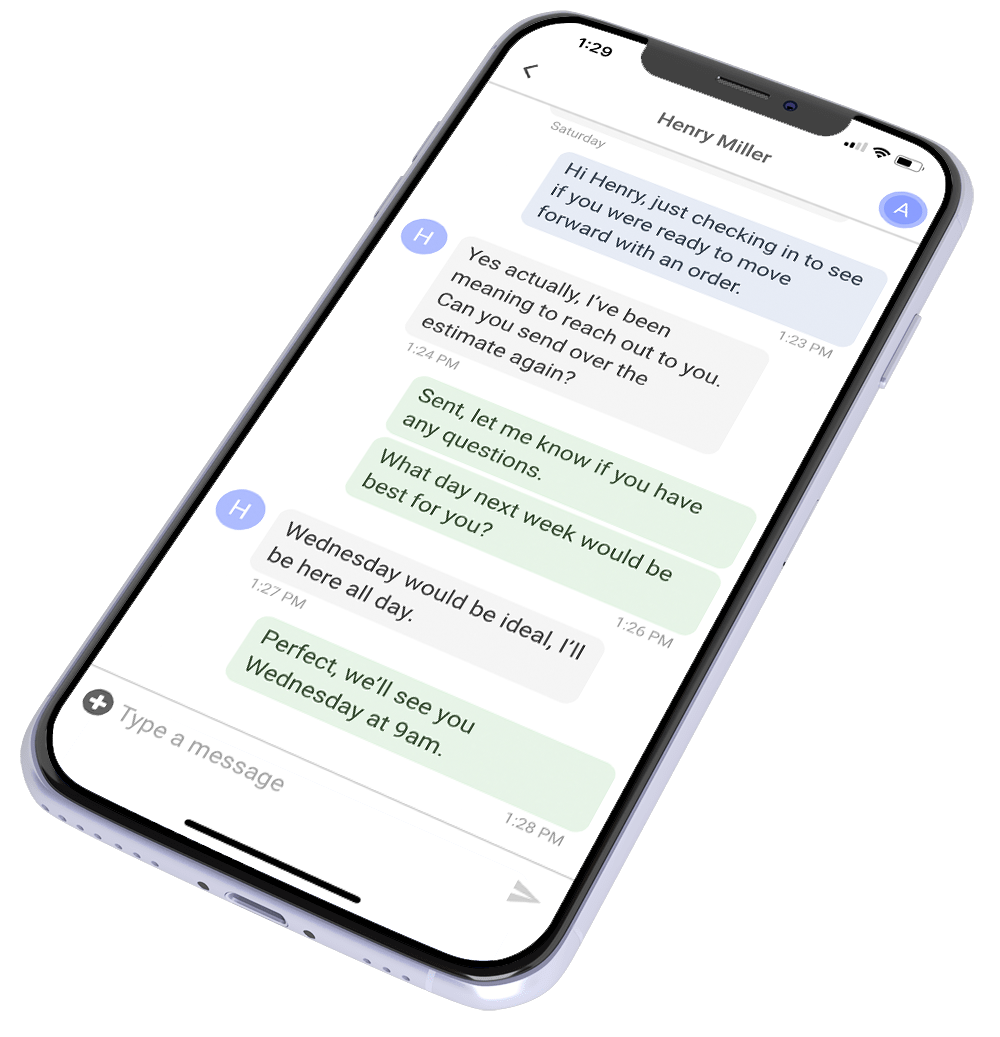If you’re not using dirt cheap roofer marketing to turn one job into three, you’re leaving easy money on the table.
Marketing is the engine that keeps your business rolling. No leads? No calls? No customers? That’s not a business—it’s a stall. You can’t grow, and you sure can’t sustain. So while cutting costs sounds good on paper, you’ve got to tread carefully. Axe the wrong thing, and you end up killing the machine.
But we’re not here to tell you to burn money either. You don’t need to max out your budget, throw cash at every billboard and Facebook ad, or try to outspend the big dogs. You also don’t need to act like Scrooge McDuck, hoarding every penny and pretending word-of-mouth will carry your business forever.
What you should do is focus on the cheapest, most common-sense marketing tactics that actually work. Stuff that takes a little elbow grease, not a boatload of cash. Because when you do it right, marketing isn’t an expense—it’s an investment. You spend a dollar, you want five back. That’s the whole game.
In this article, we’re digging into those low-cost, high-return roofing marketing moves. We’re talking basic, no-fluff strategies that keep your phone ringing and your calendar full. Ready to stop wasting money and start building smart? Let’s get into it.

Neighborhood-Level Marketing
We’re stealing this one from the great and powerful Brad Akers. His whole philosophy? Turn one job into three. And the way you do that is with good old-fashioned neighborhood-level marketing. This strategy doesn’t cost much—just a little time, a few calories, and some door hangers.
Here’s how it works. Before you do an inspection, hang door flyers on the houses immediately surrounding the one you’re about to visit. Do your inspection like normal, then look around and see who grabbed a hanger. Only knock on those doors. Let them know you just inspected a neighbor’s roof, mention any damage you saw nearby, and offer to do a free inspection for them right then and there.
You’re not trying to drum up 15 leads from this. You’re just looking to get one or two. Then rinse and repeat—before the job, during the job, and after the job. Every step is another chance to connect with neighbors while your name is fresh and visible. Think of it like a local flywheel—it starts slow, then builds momentum with every spin.
Another move that stacks well with this: yard signs and Facebook ads. Yard signs are dirt cheap. Put one in the customer’s yard, then if you can, toss another at the end of the street. Take a couple photos of the roof while your crew works and run a simple geofenced Facebook ad—just target a one-mile radius around the job.
The goal is recognition. Folks will see your sign in their neighbor’s yard and see your ad in their Facebook feed. Together, it works like a one-two punch. If you’re door-knocking alongside this, you’re putting your name, face, and work in front of the same people three different ways. That kind of repetition builds trust—and trust books inspections.
Done right, each job becomes its own little engine. One that pulls in the next one… and the next. When your jobs start selling jobs, you’ve got real marketing momentum. And if you want to go deeper into this strategy, look up Brad Akers—he’s the king of local marketing that actually works.
Social Media Marketing (Without Breaking the Bank)
Social media marketing can get out of hand fast. One minute you’re posting a roof photo, and the next you’re sinking thousands into Facebook ads or filming skits you hope will go viral. Don’t fall into that trap. You don’t need high-dollar production to make social media work. At its core, roofing content on social platforms can be ridiculously cheap—and way more effective than you think.
Start simple: record your inspections. Have your sales reps film quick videos while they’re up on the roof. Get them talking about what they see, what it means, and what problems could happen if it’s ignored. Turn them into local celebrities. People love watching real professionals doing real work in their neighborhood.
Next, collect before-and-after photos. But don’t post them as two separate images—use a single side-by-side shot. Left side shows the roof before you touched it, right side shows the finished job. That way, folks can see the difference without clicking or swiping. You can do the same with drone footage—record the crew working, show off clean installs, or zoom out to show full neighborhoods.
Video testimonials are another goldmine. If you can get a happy homeowner on camera saying a few kind words, post it. But if they’re shy, don’t sweat it. Another easy win is to ask your customer to make their own Facebook post about their experience. Then, you share it, comment on it, and let their words sell your next job for you.
You can even run the process in reverse—make your own post about the job, tag the customer, and ask them to like, comment, and share. That’s a free referral. You can sweeten the deal with a gift card—50 bucks to Texas Roadhouse goes a long way. This kind of simple, smart posting builds trust and visibility without spending a fortune.
And don’t forget about casual, local content. Post videos from fairs, parades, or events you’re attending. Show your team out in the community. Let folks know where to find you. These little posts build personality and presence without needing a dime of ad spend.
Bottom line—yes, social media can get complicated. But it really doesn’t have to. Simple wins. Cheap works. And in roofing, visibility builds trust—and trust books jobs.
READ: Simple Social Media Marketing for Roofing Companies
Content and Video Marketing
Let’s talk about content and video marketing—not to be confused with social media marketing. Social media grabs attention. It entertains. It starts conversations. But content and video marketing? That’s all about education.
Andy Keys has an awesome approach to video marketing, and a lot of what he teaches applies just as well to blogs. At the core, this kind of marketing answers homeowner questions before they ask them. When someone starts researching their roof, they’re going to Google or YouTube. If you’re the one who shows up with helpful videos or blog posts that explain what they’re dealing with, you instantly stand out from the roofers who just want to sell. You become the helpful expert, not the pushy salesperson.
This kind of content works best when it mirrors real conversations. Think of the questions homeowners always ask—whether it’s about insurance claims, shingle types, or timing. Record a video about it. Or if you’d rather write it out, put your answer in a blog. If someone brings it up during a call or inspection, you can say, “I’ve actually got a video that covers this—mind if I text it to you?”
Video also makes your process easier to follow and more professional. You can record a quick welcome video and send it after someone books an inspection. Or make a short clip explaining how your inspection works and send it ahead of time. Some roofers drop an intro video in their quotes that talks about who they are, their values, and why homeowners trust them. These small things make a big impact and help blur the line between marketing and sales—in a good way.
Now yes, content and video can get expensive. Some pros charge thousands for polished clips or ghostwritten blogs. But here’s the thing—you’ve got the knowledge already. You just don’t need to hire an expert to unlock it. You can become your own expert with tools you already have.
There are free tutorials all over YouTube on how to film videos with your phone. You don’t need a studio—just decent lighting and a steady hand. For written content, start with tools like AnswerThePublic or even Google. Type in “roofing questions,” scroll down to the “People Also Ask” box, and start answering every question you see. Open up Google Docs, voice-type your thoughts, then send that rough draft to ChatGPT and say, “Make this readable.”
Boom—you’re publishing helpful content with your own expertise, without paying Fiverr strangers or overpriced agencies. It’s fast. It’s simple. And it’s way more trustworthy because it actually sounds like you.
READ: 25 Proven Roofing Blog Ideas
Referrals: The King of Roofing Marketing
Referrals are the absolute king of marketing. Nothing comes close. They convert better, leave more five-star reviews, and—best of all—they create even more referrals. It’s a beautiful cycle. One happy homeowner can trigger a chain reaction of new customers, and all you had to do was take care of the first one.
But here’s the real question: how do you actually create a referral program that works? We wrote a full article on this—go check it out if you want the deep dive. For now,let’s break down the key principles, borrowed from the Great and Powerful Adam Bensman. He’s got this stuff dialed in. If you follow his playbook, referrals become less of a happy accident and more of a predictable system.
Start by asking for referrals at the point of sale. That’s when your customer is feeling the most positive emotion—relieved, excited, and grateful. Ask again when the materials get ordered. Ask during your post-job inspection. And set up an automated system that keeps reminding them for months (or years) after the job is done.
Next, ditch the delayed rewards. Give an instant incentive. A $50 Texas Roadhouse gift card feels real, tangible, and exciting. “$500 off your next repair” sounds like a scam. Keep it simple. Give something small but immediate.
Finally, frame the ask the right way. Don’t say, “Know anyone else who needs a roof?” Instead, ask, “Is there anyone else I can help?” You’re not begging for names. You’re offering help. That shift in language keeps the conversation natural and warm.
If you nail these steps, referrals get easier. And once you get momentum, your referral flywheel starts spinning on its own. For a full breakdown—including templates, tools, and exact phrasing—head over to our article on how to build a referral program that actually works. You’ll thank yourself later.
The Flywheel: Your Secret Weapon for Cheap, Scalable Marketing
If there’s one thing ProLine should be remembered for—besides automation, five-star service, and helping roofers sell more—it’s the flywheel. It’s the idea that you take one piece of content and spin it into everything else. No more starting from scratch. You do the work once, and let that effort keep paying off in every channel.
Take this article for example. It was inspired by a Roofer to Roofer episode where Scott and AJ (our CEO) talked through dirt-cheap roofing marketing. That episode got turned into YouTube Shorts. This blog post came from that same idea. And from here, we could turn a single paragraph into an email, a caption, or a sales script—easy.
Here’s what the flywheel looks like in action: say you write a blog answering a common roofing question. You record a short video explaining the same thing. That video becomes a blog post. You pull a few key lines and turn them into social posts. Then you run those as ads around your job sites, or drop them into your follow-up emails.
The value here is in the multiplier effect. You do the thinking, writing, or filming once. Then you stretch it—everywhere. Shorts, posts, ads, blogs, follow-up content, training materials. You name it.
That’s how dirt-cheap marketing becomes even cheaper—and way more effective. One video becomes ten touchpoints. One article becomes a dozen leads. The flywheel saves time, builds trust, and keeps your name out there without draining your wallet. So spin it up, let it roll, and ride the momentum.
GUIDE: Digital Marketing for Roofers Made Easy
Conclusion
Marketing works just like everything else in life. Twenty percent of your effort yields eighty percent of the results. So focus on that 20%. Get freakishly good at the basics. Nail the fundamentals. Do the free stuff, the cheap stuff, the stuff that builds trust and turns one job into two.
Once that starts rolling—once you’re getting referrals off Facebook, turning inspections into new jobs, and educating homeowners with your videos and blogs—that’s when you’ve earned the right to turn up the heat. That’s when you start layering in brand plays. Sponsoring Little League teams. Wrapping trucks. Investing in the kind of visibility that makes your name stick.
But all that only works once the foundation’s solid. Referrals. Local marketing. Smart content. These are your cash cows. Feed them first.
Do that, and your marketing starts working for you, not the other way around. That’s when the flywheel spins, the leads snowball, and the jobs never stop coming.
If you want to see how ProLine actually works, watch our quick overview video. It’ll show you exactly how roofers use ProLine to book more jobs with less effort.
Want to try it for yourself? Book a demo of ProLine and see how it can help you sell more roofing jobs without chasing leads all day. Still shopping around?
Check out our guide to the 8 best roofing CRMs for residential roofers. We break down the top options so you can choose the right one for your business.
OH, and we also have a guide to the best roofing marketing companies and agencies if you need some outside help!




